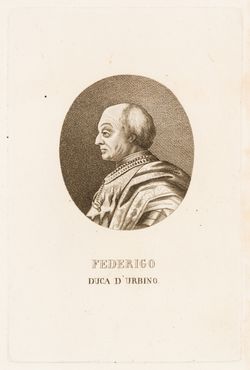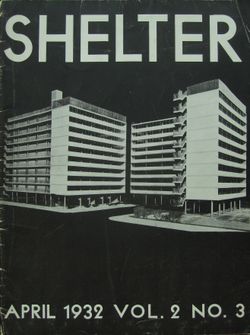Series
AP177.S1
Description:
This series documents Jesse Reiser and Nanako Umemoto’s design process for the Kansai-kan of the National Diet Library competition in 1996. The variety of formats present in the series relate to the firm’s design process for this project, where manual drawings, physical models and CAD software contributed to one another throughout design iteration. Some digital files were created after the competition. Manual drawings include penciled sketches, detailed inked plans and printed CAD files generally taped on larger mylar sheets. They represent either plans or details of the building’s design. The printed renderings most often present elevations and sections of the buildings. For plans, other printed CAD files were inked back on mylar sheets. Drawings are often annotated and precisely identify the different elements of the library’s program. Digital files represent either elements of the architectural design (conveyors, auditorium, store, etc.) or detailed plans, including topographical lines and 3-D models. They include rendered and scanned images and plans in TIFF, GIF, JPEG, PICT (MacIntosh QuickDraw) and FH5 (Macromedia Freehand) file formats. Most CAD models were created in form*Z, although Microstation DGN files and IGES files created in Alias are also present in the project records. The directory “Kansai Documents” contains a few textual records created with the publishing software QuarkXPress, including labels to be printed and used on physical drawings, correspondence and a text by Jesse Reiser for the Reversible Destiny exhibition catalogue in 1997. Most directories and file names are indicative of the file’s content, clearly referring to building elements, although in some cases files names are non-descriptive. For example, some files use the name of one of the assistants (Yama). File names are sometimes repeated in different directories, including files that are part of AP177.S2.001
1996-2014
RUR Architecture working files
Actions:
AP177.S1
Description:
This series documents Jesse Reiser and Nanako Umemoto’s design process for the Kansai-kan of the National Diet Library competition in 1996. The variety of formats present in the series relate to the firm’s design process for this project, where manual drawings, physical models and CAD software contributed to one another throughout design iteration. Some digital files were created after the competition. Manual drawings include penciled sketches, detailed inked plans and printed CAD files generally taped on larger mylar sheets. They represent either plans or details of the building’s design. The printed renderings most often present elevations and sections of the buildings. For plans, other printed CAD files were inked back on mylar sheets. Drawings are often annotated and precisely identify the different elements of the library’s program. Digital files represent either elements of the architectural design (conveyors, auditorium, store, etc.) or detailed plans, including topographical lines and 3-D models. They include rendered and scanned images and plans in TIFF, GIF, JPEG, PICT (MacIntosh QuickDraw) and FH5 (Macromedia Freehand) file formats. Most CAD models were created in form*Z, although Microstation DGN files and IGES files created in Alias are also present in the project records. The directory “Kansai Documents” contains a few textual records created with the publishing software QuarkXPress, including labels to be printed and used on physical drawings, correspondence and a text by Jesse Reiser for the Reversible Destiny exhibition catalogue in 1997. Most directories and file names are indicative of the file’s content, clearly referring to building elements, although in some cases files names are non-descriptive. For example, some files use the name of one of the assistants (Yama). File names are sometimes repeated in different directories, including files that are part of AP177.S2.001
Series
1996-2014
Project
Architecture In Love (1997)
AP207.S1.1997.PR01
Description:
The project series documents "Architecture in Love" a series of decorative rings designed by Pettena in 1997. "Rather than any decorative intent, this series of rings favors an essentially architectural approach. The object, formed of two halves that are assembled into the completeness of a whole, is in reality a disassembled and reassembled building, investigated in all its possible spatial values." [1] The project series contains sketches and design drawings showing the rings at different angles, photographs and project descriptions in Italian and in English. Source: [1] Gianni Pettena website, https://www.giannipettena.it/italiano/opere-1/design-architectures-in-love-1997-1/ (last accessed 22 January 2020).
circa 1997-2015
Architecture In Love (1997)
Actions:
AP207.S1.1997.PR01
Description:
The project series documents "Architecture in Love" a series of decorative rings designed by Pettena in 1997. "Rather than any decorative intent, this series of rings favors an essentially architectural approach. The object, formed of two halves that are assembled into the completeness of a whole, is in reality a disassembled and reassembled building, investigated in all its possible spatial values." [1] The project series contains sketches and design drawings showing the rings at different angles, photographs and project descriptions in Italian and in English. Source: [1] Gianni Pettena website, https://www.giannipettena.it/italiano/opere-1/design-architectures-in-love-1997-1/ (last accessed 22 January 2020).
Project
circa 1997-2015
Sub-series
AP116.S2.SS11.D7
Description:
File documents the planning and actual exhibition, "Eavesdropping on Architecture", held 3 June - 29 July, 2000, at The Urban Center, New York City, New York. Material in file was was produced between 1999 and 2000. FIle contains videocassettes, receipts, publicity material, correspondence, budgets and guest lists.
1999-2000
Anyone for Architecture Exhibition
Actions:
AP116.S2.SS11.D7
Description:
File documents the planning and actual exhibition, "Eavesdropping on Architecture", held 3 June - 29 July, 2000, at The Urban Center, New York City, New York. Material in file was was produced between 1999 and 2000. FIle contains videocassettes, receipts, publicity material, correspondence, budgets and guest lists.
File 7
1999-2000
textual records
ARCH153686
Description:
essay by James M. Mayo Jr. rejected for publication by editorial board of Oppositions magazine
1979
Aesthetic Equity in Architecture
Actions:
ARCH153686
Description:
essay by James M. Mayo Jr. rejected for publication by editorial board of Oppositions magazine
textual records
1979
textual records
An Education in architecture
AP058.S2.SS2.002
1989-1990
textual records
1989-1990
textual records
ARCH104085
Description:
correspondence, programs of events, announcements
1983-1986
Foundation for architecture, The
Actions:
ARCH104085
Description:
correspondence, programs of events, announcements
textual records
1983-1986
2 August 2004
25 August 2011 to 23 July 2018, 6pm
textual records
AP197.S1.SS2.056
circa 1980-2000
Drafts of Architecture and Marxist cirticism advanced architecture theory seminar
Actions:
AP197.S1.SS2.056
textual records
circa 1980-2000
photographs
Architecture à l'Exposition
PH1981:0684:001-031
published 1889
photographs
published 1889

